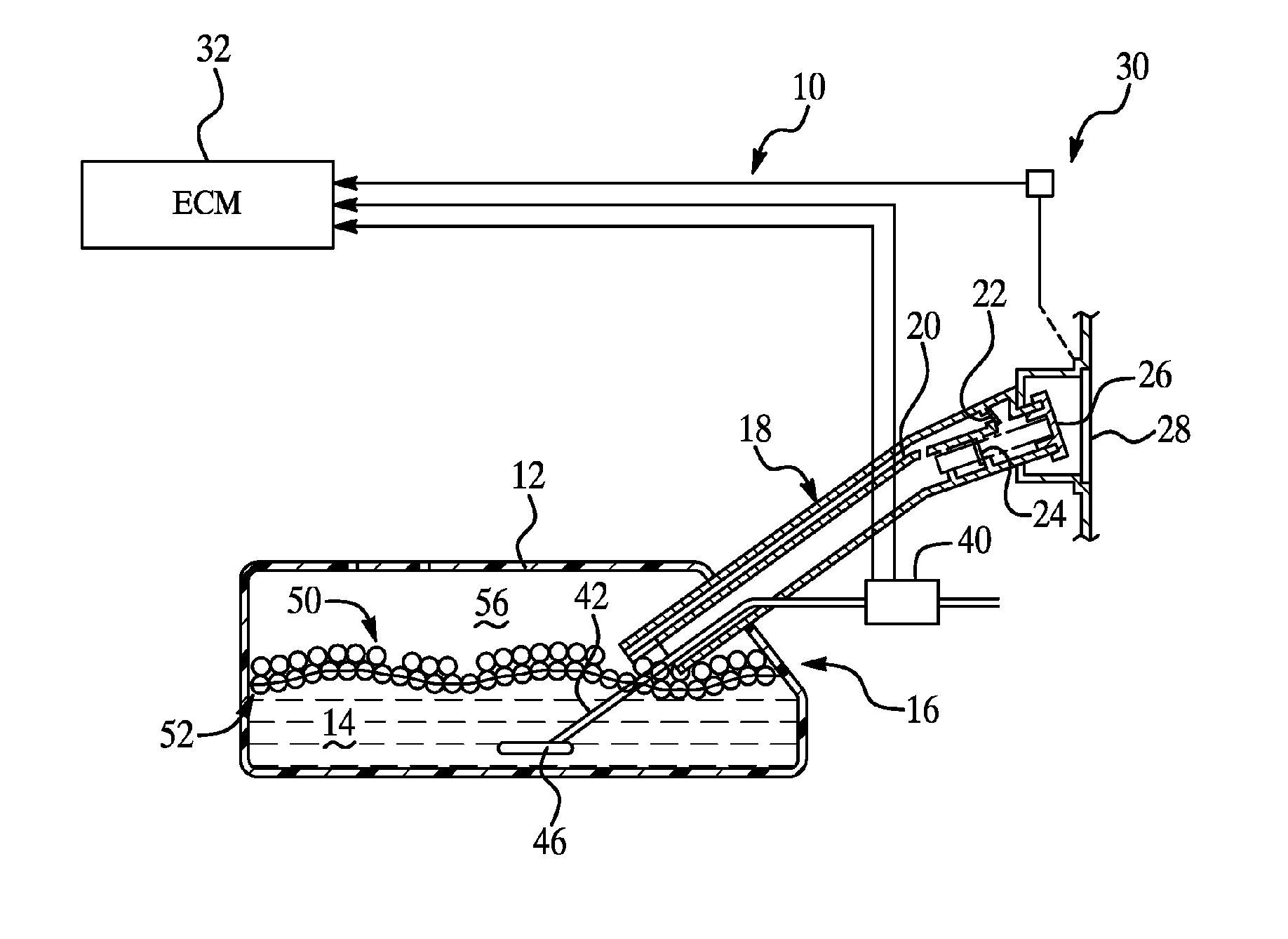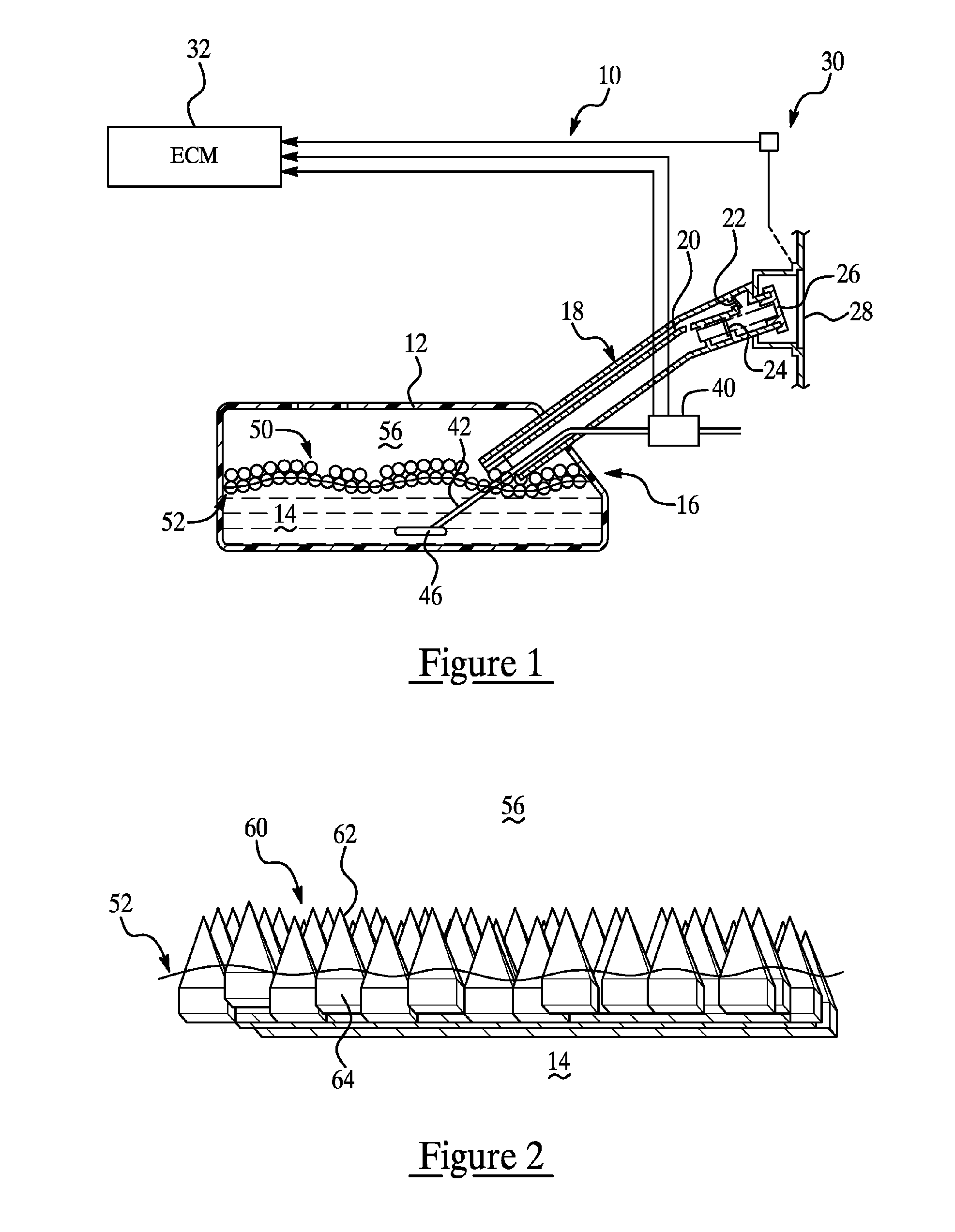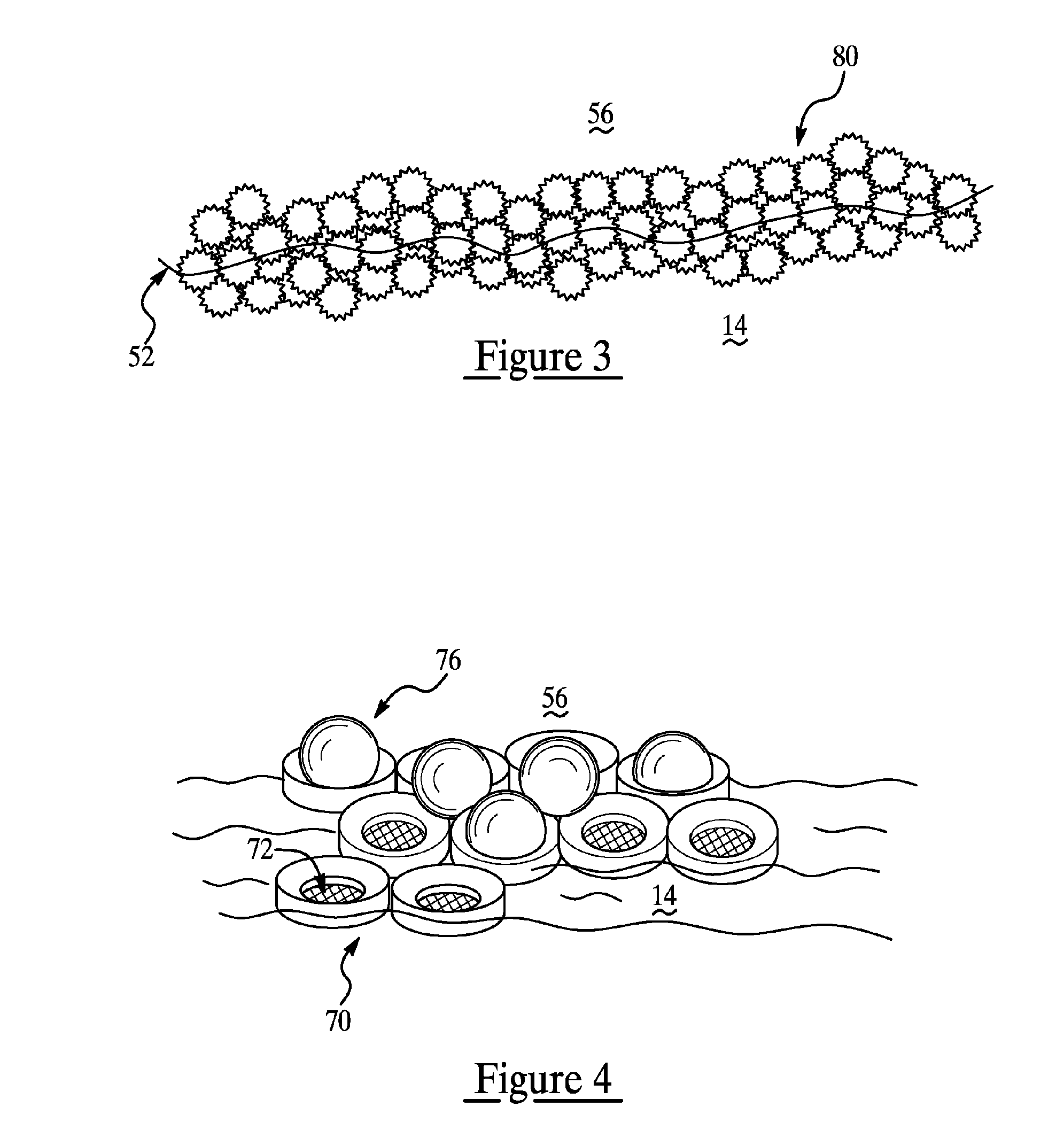Fuel vapor management for stored fuel using floating particles
- Summary
- Abstract
- Description
- Claims
- Application Information
AI Technical Summary
Benefits of technology
Problems solved by technology
Method used
Image
Examples
Embodiment Construction
)
[0015]FIG. 1 is a partial cross-section of a representative fuel system illustrating a system or method for reducing the rate of fuel vapor formation according to one embodiment of the present invention. Although the present invention is illustrated and described with respect to a representative automotive fuel system 10, those of ordinary skill in the art will recognize that the present invention may be used in a number of diverse applications that include a volatile liquid stored in a rigid or semi-rigid storage tank to reduce vapor formation rate by reducing exposed evaporative surface area.
[0016] Representative fuel system 10 includes a semi-rigid or rigid container or tank 12 adapted for holding liquid fuel 14. Tank 12 may have a varying cross-section to maximize fuel storage capacity while accommodating packaging constraints for a particular application. Fuel filling tube 18 may include a vapor recirculation channel 20 and vent valve 22 to manage vapor generation during fuel...
PUM
 Login to View More
Login to View More Abstract
Description
Claims
Application Information
 Login to View More
Login to View More - R&D
- Intellectual Property
- Life Sciences
- Materials
- Tech Scout
- Unparalleled Data Quality
- Higher Quality Content
- 60% Fewer Hallucinations
Browse by: Latest US Patents, China's latest patents, Technical Efficacy Thesaurus, Application Domain, Technology Topic, Popular Technical Reports.
© 2025 PatSnap. All rights reserved.Legal|Privacy policy|Modern Slavery Act Transparency Statement|Sitemap|About US| Contact US: help@patsnap.com



